Key Takeaways
- The violin family of instruments consists of the violin, viola, cello, and double bass.
- Each instrument works together to produce an extraordinary, blended sound.
- Instruments like the violin are valuable because of the craftsmanship required of a luthier.
- Playing the violin, viola, cello, or double base requires different positioning and handling.
Stringed instruments create some of the most beautiful sounds humans have ever heard, and few have shaped music and emotion as deeply as the violin family. The violin family is the viola, the cello and the double bass. For more than four centuries, these instruments have come to define classical music.
Each instrument in the family shares a similar design: a wooden body, four strings, a bow, and the magical ability to express sound with incredible nuance. From the bright, expressive sound of the violin to the deep resonance of the double bass, the violin family covers the full range of human feeling and harmony. These string instruments are used across styles and genres: classical, jazz, and folk, just to name a few.
The violin family remains central to the world of music whether performed by solo violinists or full symphony orchestras. This article will take you on a deep dive into the violin family: the origins, development, design, and essentials of playing each instrument.
Why focus on the violin when there are so many instruments in the violin family? Consider playing the viola.
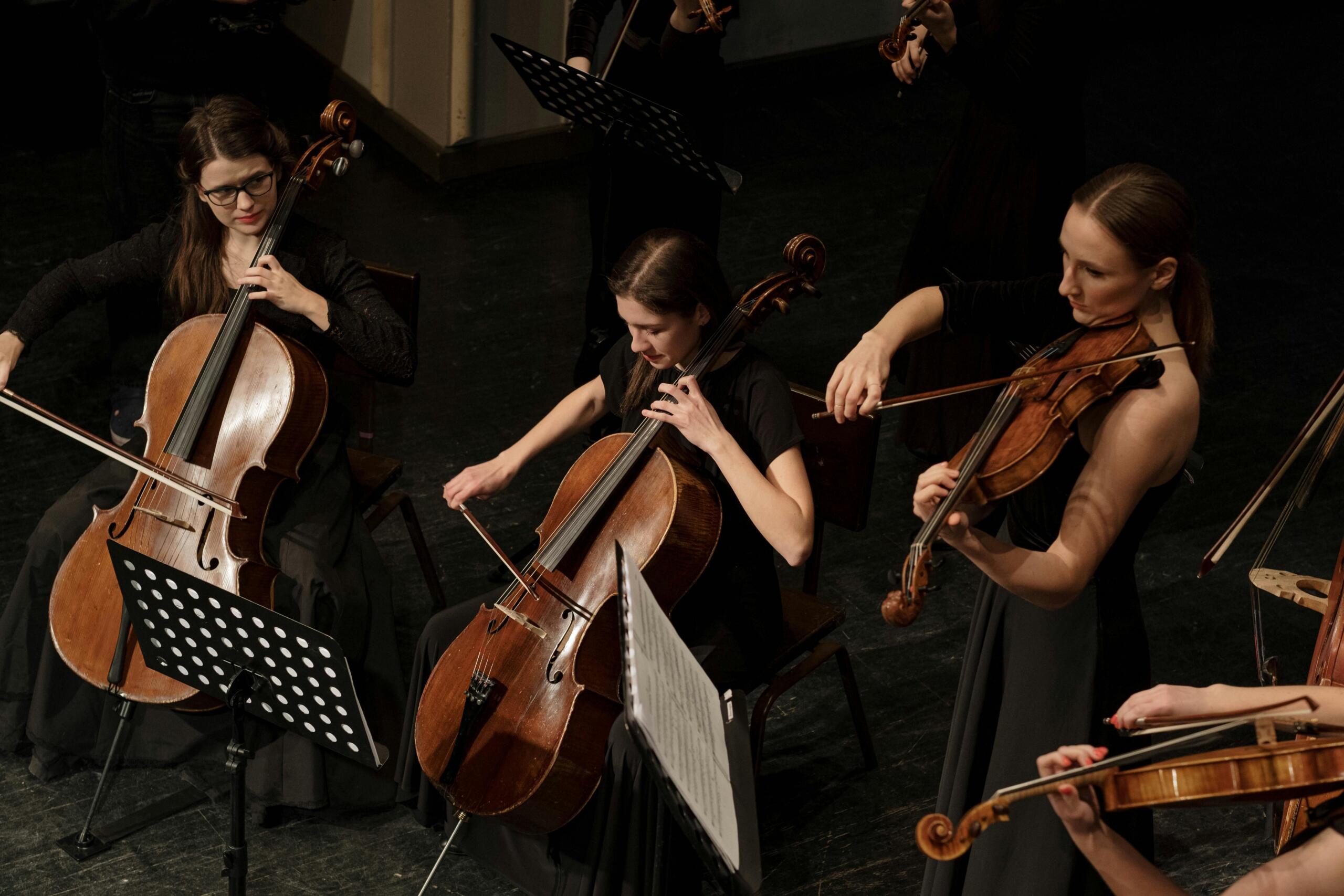

Origins and Evolution of the Violin Family
Early 1500s
Birth of the Violin
The first true violins are built in Northern Italy, particularly in Brescia and Cremona, Italy. Early luthiers such as Gasparo da Salò and Andrea Amati refine the violin’s body shape and proportions.
1600s
Standardization and Growth
The violin family expands to include the viola and violoncello (cello). Makers like Amati, Stradivari, and Guarneri perfect the design, establishing tonal balance and projection still unmatched today.
1700s
The Double Bass and Classical Expansion
The double bass evolves from larger viol instruments and joins the orchestra’s lower register. The violin family becomes standard in symphonic and chamber music, with composers like Haydn, Mozart, and Beethoven writing extensively for strings.
1800s
Romantic Virtuosity and Global Influence
Technological advances improve string tension, bow design (Tourte bow), and tonal power. Virtuoso performers such as Niccolò Paganini and Franz Liszt elevate the violin’s status as a solo instrument.
1900s
Electric Innovation and Genre Diversity
The invention of the electric violin (1920s–30s) introduces amplification and effects, expanding the violin family’s reach into jazz, rock, and pop.
The Birth of the String Family
Let's start by exploring the rich history and beginnings of the violin family. The story of the violin family begins in the 16th century, in Northern Italy. Early bowed instruments, like the lira da braccio and Byzantine lira, influenced the creation of the modern violin.
As makers improved materials and shape, a brighter sound and stronger projection were achieved, perfect for larger performance halls.
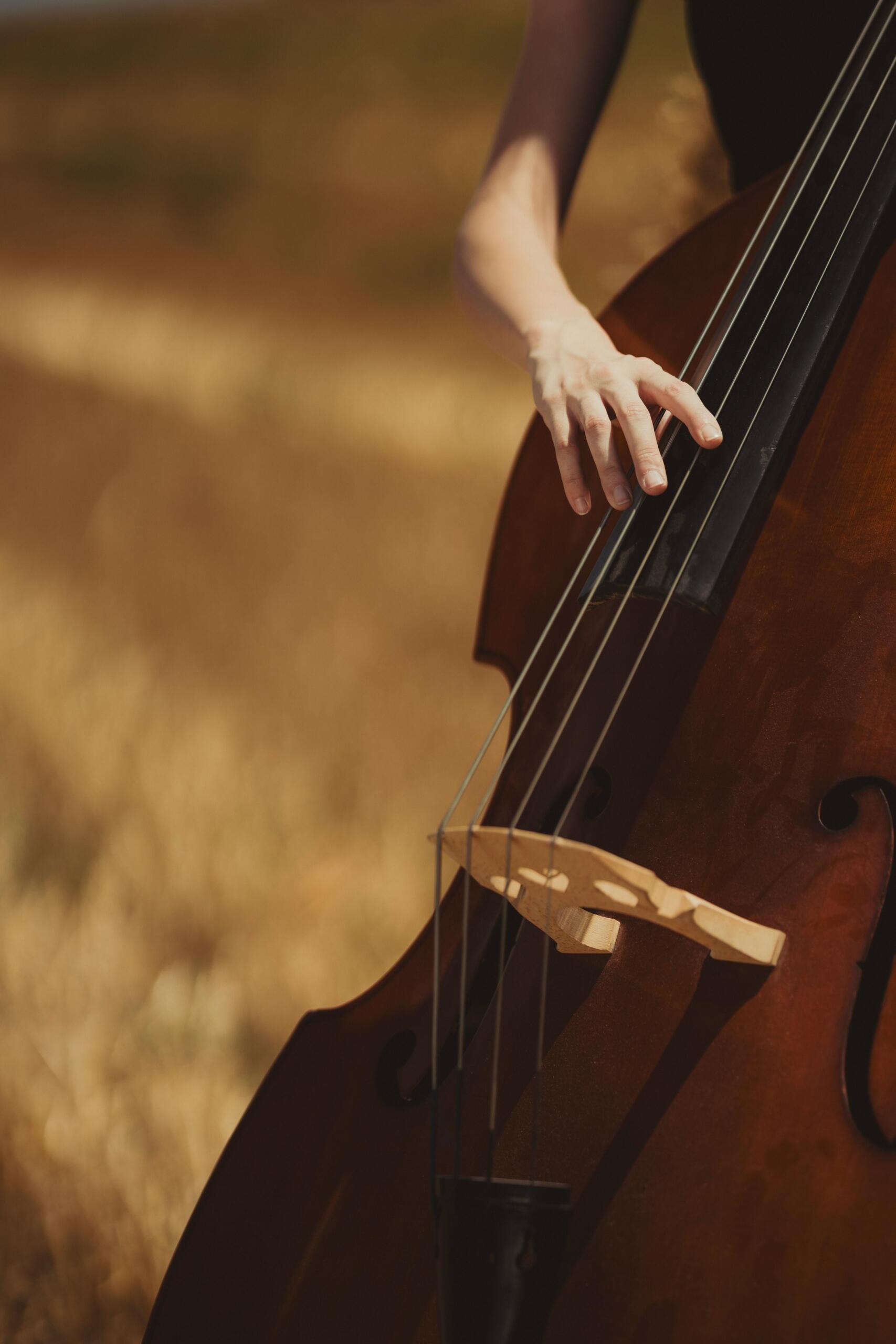
The violin, viola, cello, and double bass gradually replaced the older viol family, which had flat backs and frets. These new string instruments had arched tops and curved sides that produced a clearer, more powerful tone.
By the late 17th century, master luthiers such as Antonio Stradivari, Giuseppe Guarneri, and Niccolò Amati perfected the instruments. Their meticulously handcrafted violins, cellos, and violas remain among the world’s most treasured musical masterpieces. Many of the original instruments are still in use, and played by some of the world's most accomplished musicians.
Learn more about the double bass and how to play this majestic instrument.
Development of Individual Instruments
Each instrument in the violin family has a unique range, role, and sound. Together, they form a perfectly balanced ensemble that can express a spectrum of emotions from joy to sorrow. The modern violin family took form between the 16th and 18th centuries.
The violin is the smallest and highest-pitched member of the violin family. It has four strings, tuned in perfect fifths: G3, D4, A4, and E5. The left hand presses the strings to produce different notes, while the right hand moves the bow across them to create sound. Perfected by master luthiers such as Andrea Amati, Antonio Stradivari, and Giuseppe Guarneri del Gesù, the violin became prized for its balance of agility and projection.
Slightly larger than the violin, the viola has a deeper, warmer sound. It’s tuned one fifth lower (C3, G3, D4, A4) giving it a mellow and expressive tone.
Evolving from the bass viol, the cello found its voice in the 1600s, praised for its vocal-like depth and emotional power. The cello (short for violoncello) has a deep, human-like voice that resonates with emotion. It’s played sitting down, held between the knees, and supported by an endpin.
The largest member, often over 1.8 meters (6 ft), the double bass anchors the harmony with deep, resonant tones. Its four strings, E1, A1, D2, and G2, are tuned in perfect fourths rather than fifths, giving the instrument a unique tonal structure.
Characteristics of Violin Family Instruments
Construction and Design
The beauty of the violin family lies in its precise craftsmanship. Each instrument is built using resonant woods: spruce for the top or soundboard, and maple for the back and sides. The hollow body acts as a resonator, amplifying vibration from the strings.
The sound post and bass bar shape tone and support the structure. The varnish applied to the wood not only protects the surface, but enhances the instrument’s distinctive sound. The bow, made of horsehair stretched over a wooden stick, creates friction against the strings, transforming the movement and energy of the violinist into sound.
When the player draws the bow across a string, vibrations pass through the bridge to the body, filling the air with rich tone. The left hand changes pitch, while the right hand controls sound dynamics and expression.
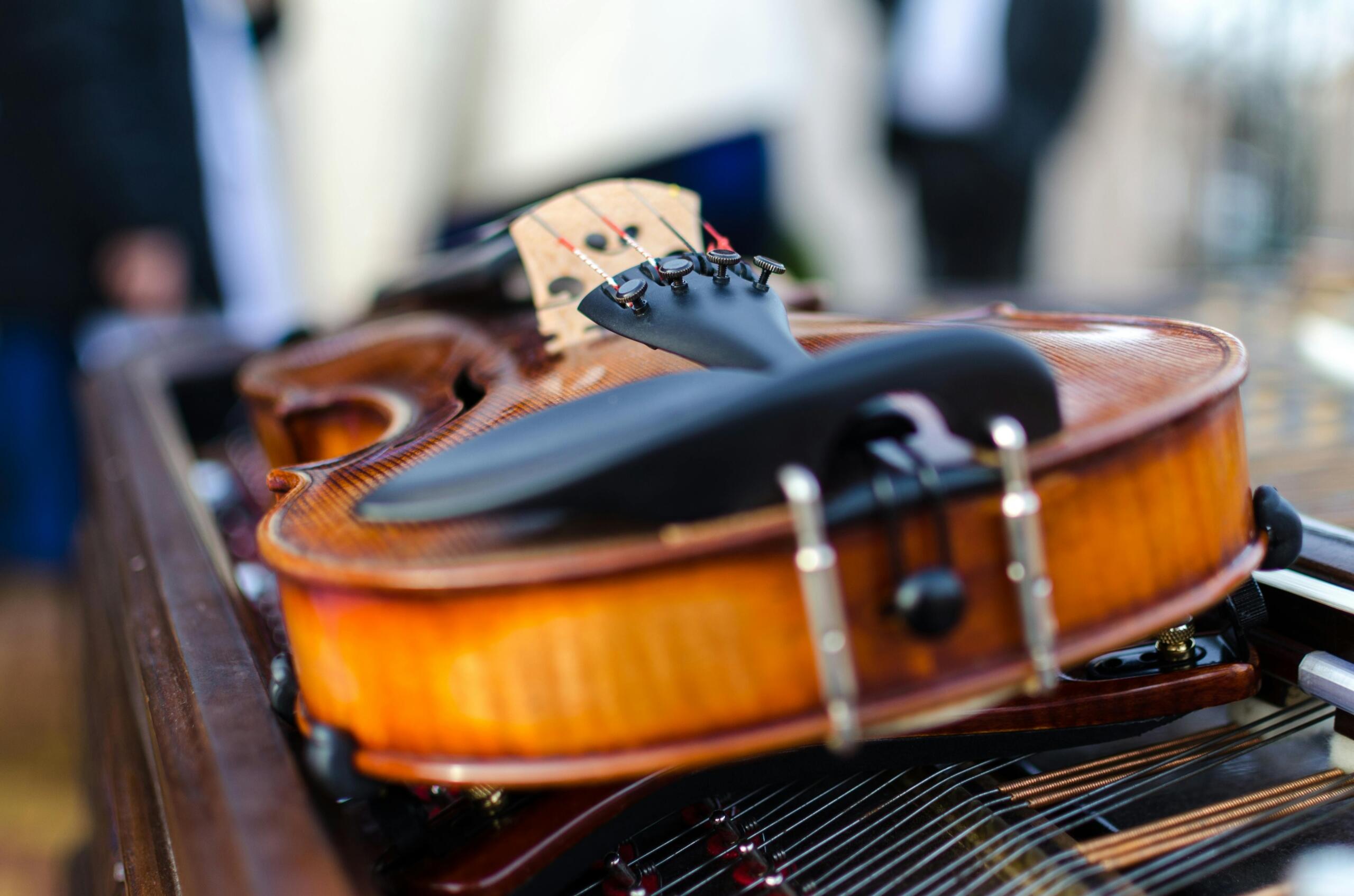
Famed classical artists like Yo-Yo Ma leverage the rich sound of the cello to make beautiful music.
Tuning and Range
The violin family covers a full spectrum of pitch, from the brilliant soprano voice of the violin to the deep foundation of the bass. Each instrument is tuned in intervals of perfect fifths, except the double bass, which uses perfect fourths for easier finger reach on its larger fingerboard.
Together, these instruments span nearly six octaves, forming the harmonic and melodic backbone of orchestral and chamber music.
| Instrument | Standard Tuning | Approx. Range | Typical Role |
|---|---|---|---|
| Violin | G3 – D4 – A4 – E5 | G3 – A7 | Melody, brilliance |
| Viola | C3 – G3 – D4 – A4 | C3 – E6 | Inner harmony |
| Cello | C2 – G2 – D3 – A3 | C2 – C6 | Bass line, melody |
| Double Bass | E1 – A1 – D2 – G2 | E1 – G4 | Foundation, rhythm |
Roles and Applications in Music
Orchestral Significance
In an orchestra, first and second violins often carry the melody. Violas add depth through harmony, cellos provide warmth and counter-melodies, while double basses reinforce rhythm and bass lines.
Together, they create a layered sound: a hallmark of Western orchestral texture. Conductors balance these voices carefully to achieve a cohesive tonal blend.
Chamber and Solo Performances
Beyond the orchestra, the violin family thrives in chamber ensembles: string quartets (two violins, viola, cello) are among the most revered forms of classical music.
Notable solo works include:
- Bach’s Sonatas and Partitas for solo violin
- Elgar’s Cello Concerto
- Hindemith’s Viola Sonata
Don't let a commute stop you from learing the violin. Enrol in violin lessons online today!

Extended Members and Variations
The Octobass
An extraordinary outlier, the octobass stands over 3.5 meters tall and produces pitches too low for most human ears to discern clearly. Invented in 1850 by Jean-Baptiste Vuillaume, it remains a rare sight, appearing occasionally in French orchestras or museum collections.
Regional Variations
Around the world, regional variations blend tradition with local culture.
- The Hardanger fiddle from Norway features sympathetic strings beneath the main ones, creating a haunting resonance used in folk music.
- The Cajun fiddle and Bluegrass violin (often called “fiddles”) adapt the same instrument to entirely different rhythmic and expressive styles.
Find a good violin teacher Toronto that will help you to become a classical musician.
Modern Adaptations and Innovations
Electric and Semi-Acoustic Variants
In the 20th century, musicians began experimenting with electric violins, violas, and cellos. Using pickups and amplifiers, these instruments brought string sounds into jazz, rock, and pop. Electric models allow for effects like reverb, delay, and distortion, expanding creative possibilities.
Artists such as Jean-Luc Ponty, Lindsey Stirling, and Apocalyptica demonstrate how traditional string instruments thrive in modern genres.
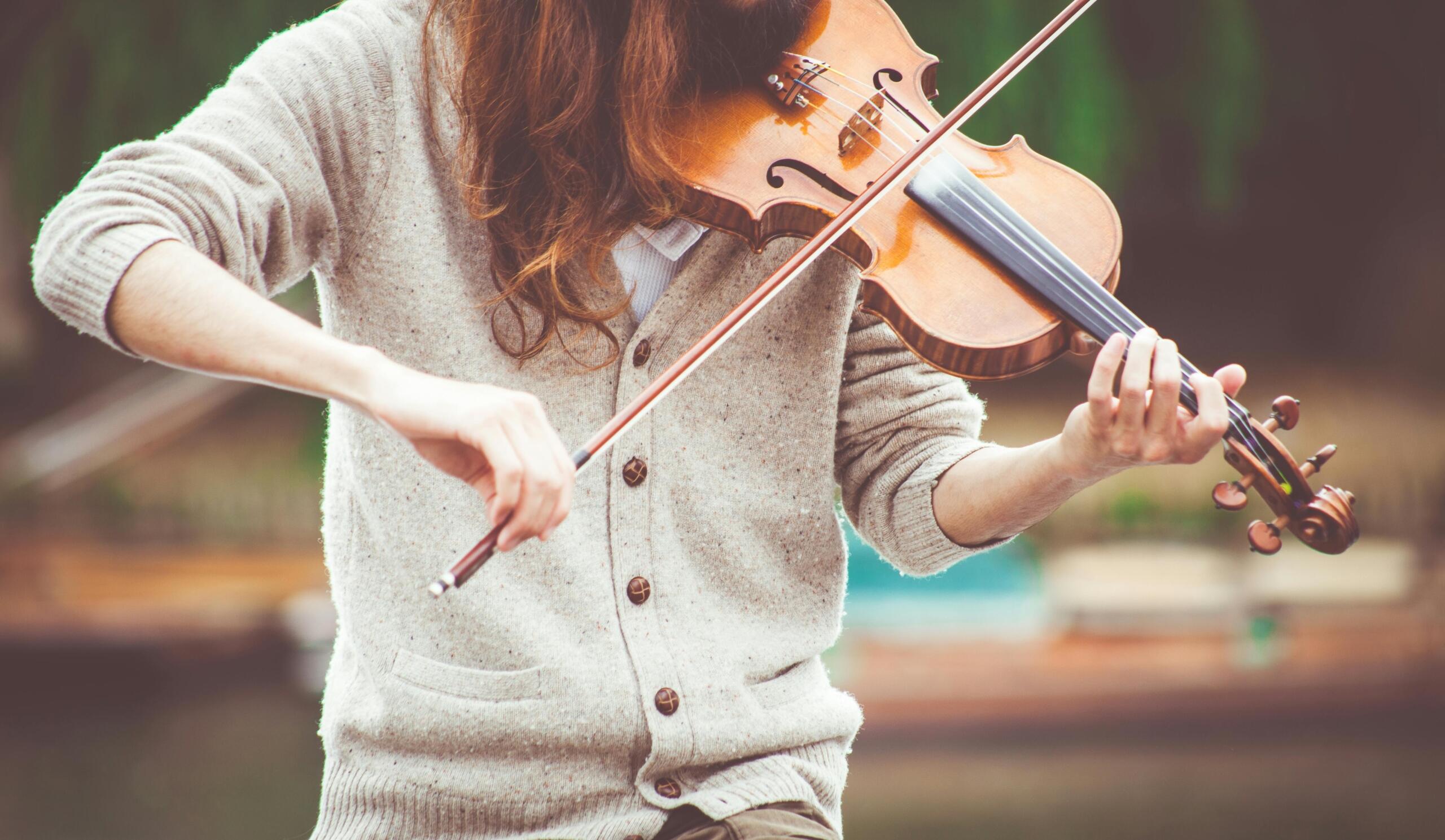
Contemporary Compositions and Techniques
Modern composers push boundaries with techniques like:
- Pizzicato glissando (sliding while plucking)
- Col legno (striking strings with the bow wood)
- Harmonics (touching the string lightly to create ethereal tones)
These innovations prove the violin family remains dynamic, evolving with every generation of performers and composers.
Playing Instruments in the Violin Family
How to play the Violin
Playing the violin involves a blend of precision, posture, and musical sensitivity. The instrument is held between the left shoulder and chin, supported lightly rather than gripped tightly. The left hand presses the strings along the fingerboard to change pitch, while the right hand controls the bow, which is drawn across the strings to create sound.
Producing a clear tone depends on steady bow pressure, smooth movement, and accurate finger placement, all refined through consistent practice.
How To Play The Cello
The violoncello (meaning "little violone"), or cello as we know it, is another bowed stringed instrument and member of the violin family. The cello is noted for being tuned an octave lower than the viola.
The cello's role in the standard orchestra is the bass of the string quartet, and often takes centre stage with concertos or sonatas being written specifically to show off its distinctive sound.
Since the cello is much larger than the violin, and therefore far heavier, most players choose to sit down when playing it. Some will sit on the edge of their seat with their left foot slightly forward with the body of the instrument resting on their chest, between their knees. Others will find other positions which they find more comfortable, it all depends on your frame, size and preference.
The important thing is to steady the cello, usually by gripping it loosely with your knees and having the neck and scroll positioned to the left of your head, enabling you to reach the strings without readjusting. Cellists often use endpin rests to prevent their endpin from sliding.
How To Play The Viola
Slightly larger than a violin, the viola is yet another bowed instrument played in a similar way to a violin. It takes up the position of the alto or middle voice of an orchestra as it has a lower and deeper sound than its smaller sibling. Much like the violin, the viola is played under the chin and can be performed with either by standing or sitting.
How To Play The Double Bass
Double Bass, or contrabass, contrebasse, string bass, bass or bass fiddle as it is otherwise known, is the instrument with the lowest pitch of all the violin family. It is tuned an octave lower than the cello. Double Bass playing techniques include:
- Pizzicato - Also known as striking. The musician strikes the strings to produce sound, usually using the side of the index finger. This technique is often used by jazz players.
- Arco - Otherwise known as bowing. This is the same technique used to play the violin and cello. The length of strings on a double bass, as well as other string instruments, depends on the length of the instrument. When it comes to the double bass, the string length may be from 90 centimeters for the 1/4 to 106 centimeters for the 3/4 (measurements based on total length).
- Slap Bass - The musician plucks or pulls the strings and releases it. As the strings slap or hit the fingerboard it creates notes that has an added "click" to it."
The Violin Family
Each member of the violin family, from the brilliant violin to the resonant double bass, carries centuries of artistry and innovation, shaping the sound of orchestras, chamber ensembles, and contemporary genres around the world. As technology and culture continue to advance, the violin family remains a living bridge between the past and the ever-expanding possibilities of musical expression.
References
- Halfpenny, Eric, Grame, & C, T. (2025, September 4). Stringed instrument | Definition, Types, History, Features, & Facts. Encyclopedia Britannica. https://www.britannica.com/art/stringed-instrument/The-violin-family
- The origins of the Violin:The birth of the violin - Musical Instrument Guide - Yamaha Corporation. (n.d.). https://www.yamaha.com/en/musical_instrument_guide/violin/structure/

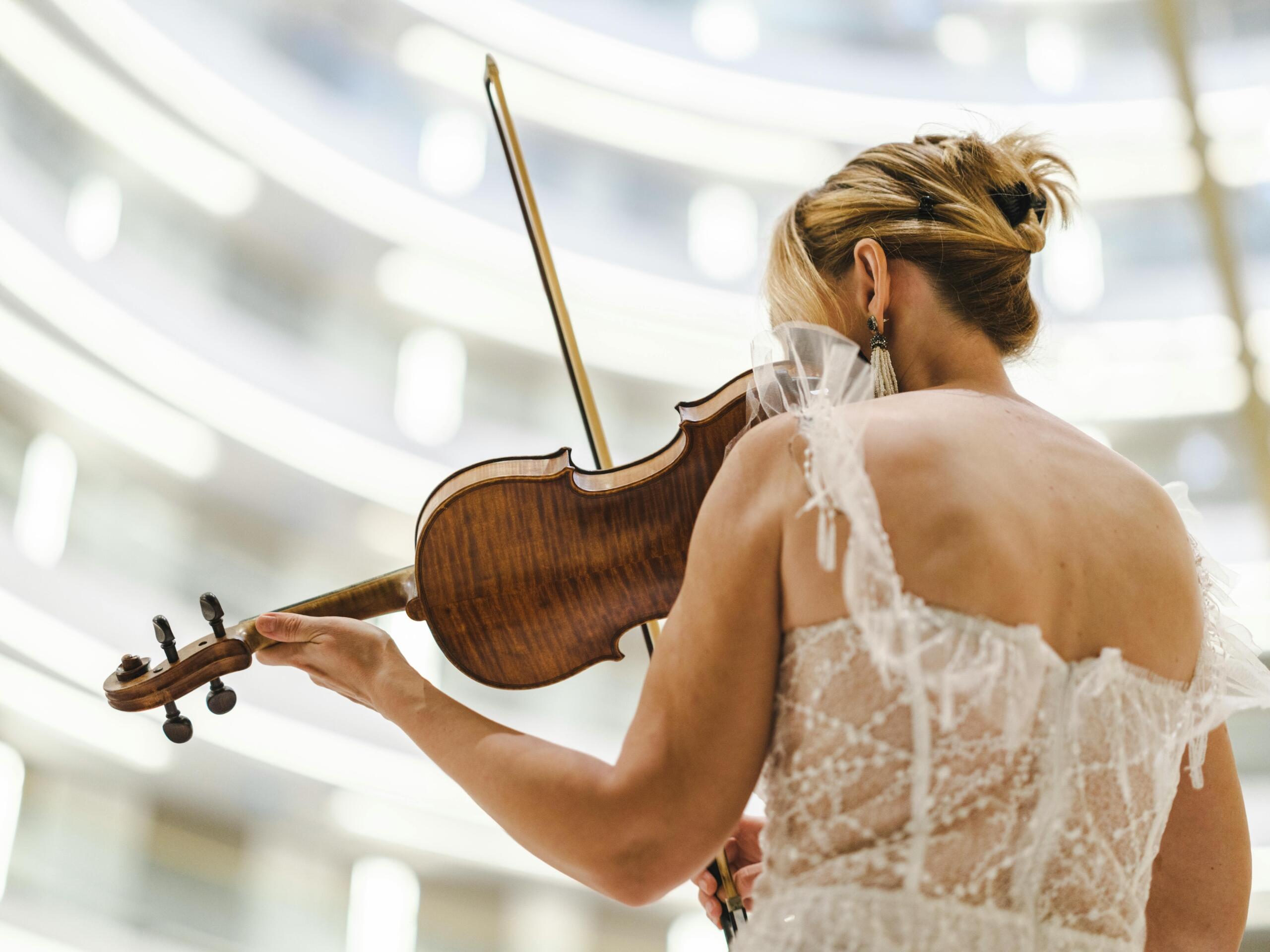















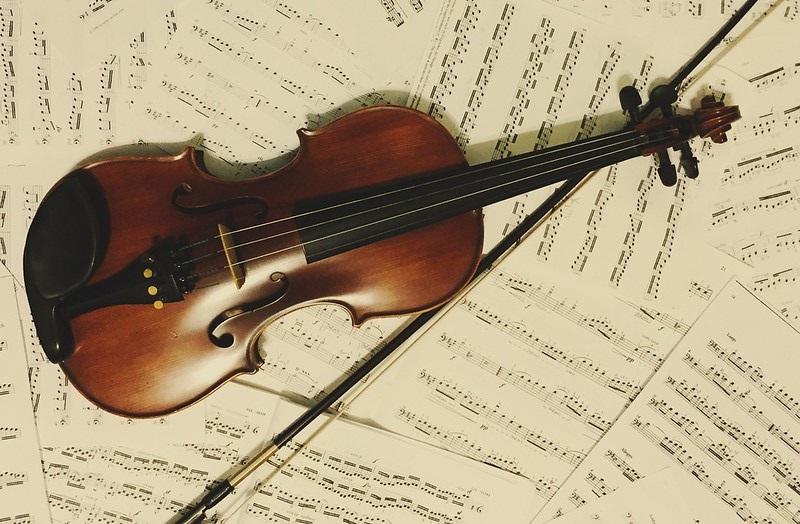

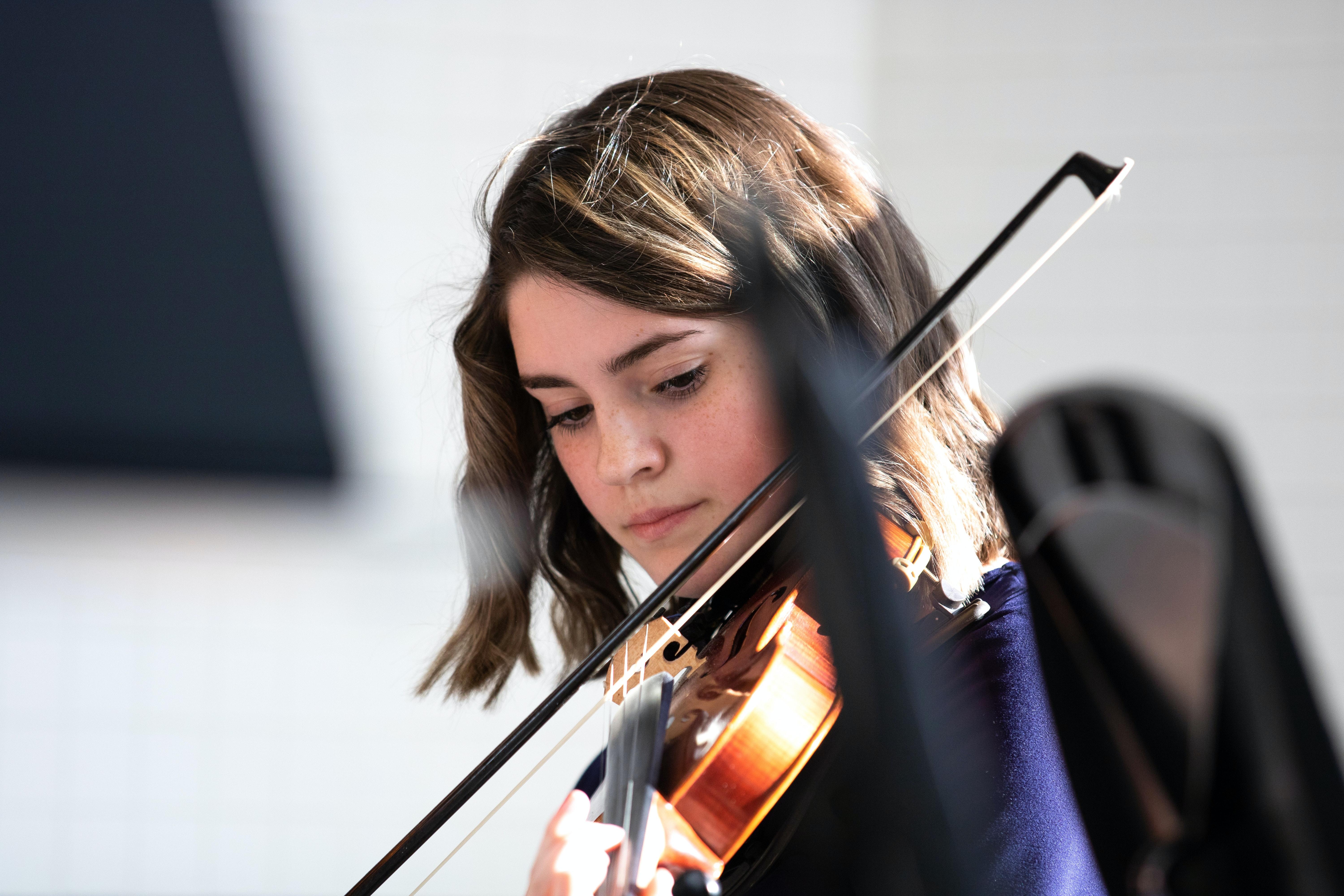




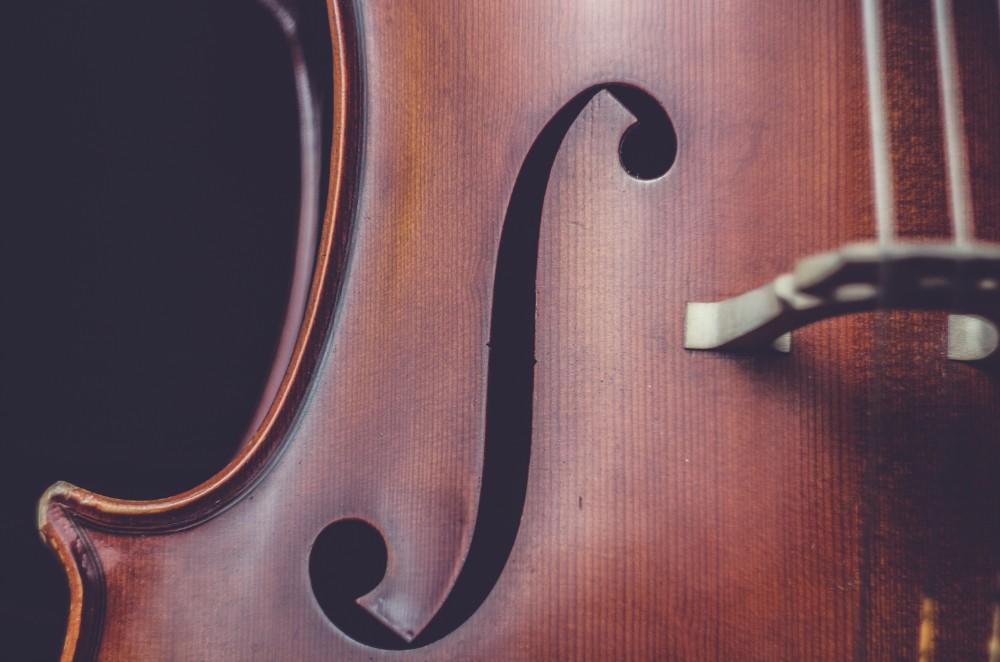
Good info. More pictures would have been nice.
Hi Ken, I’m glad you were able to take something from our blog! Thank you for the feedback too.